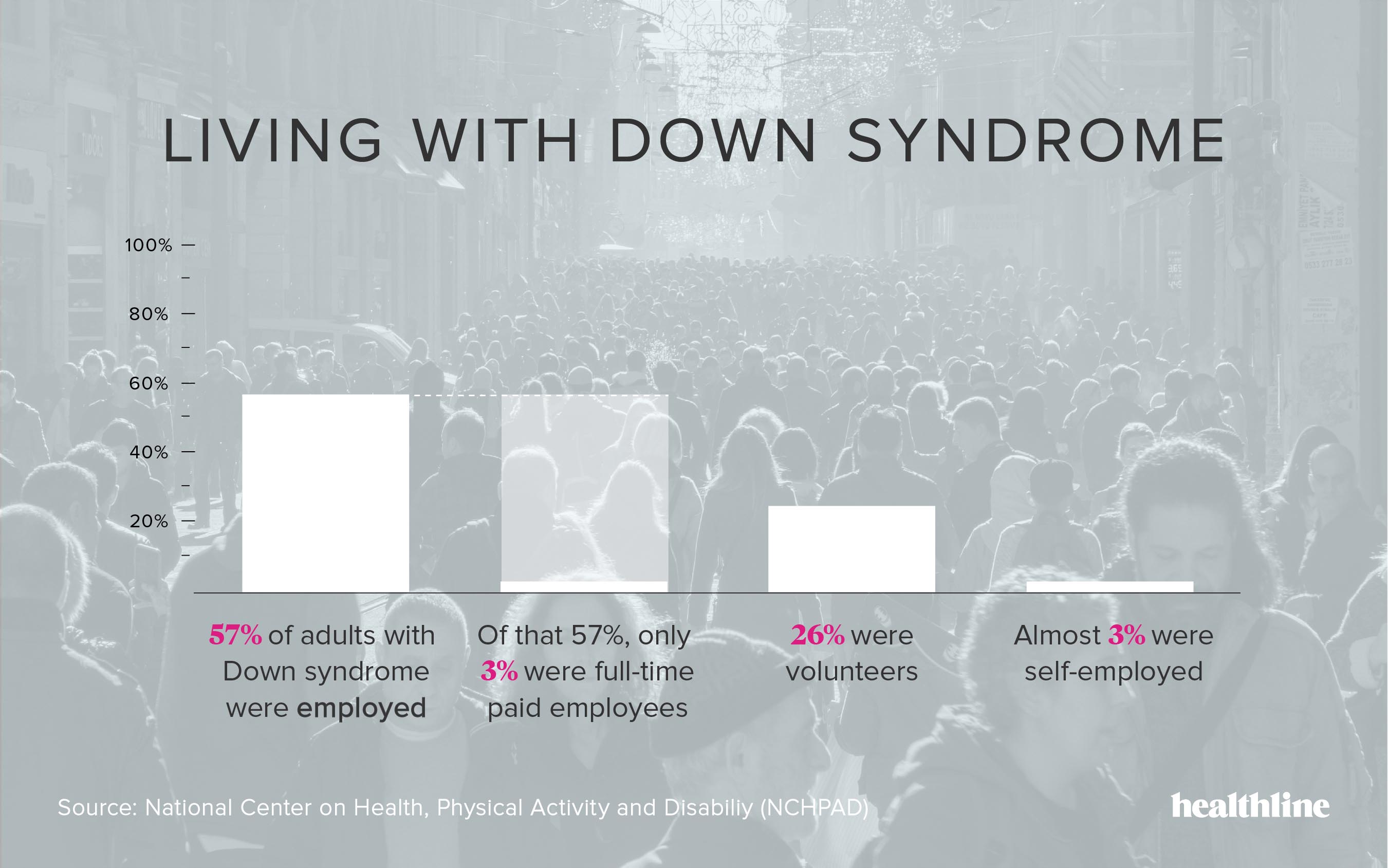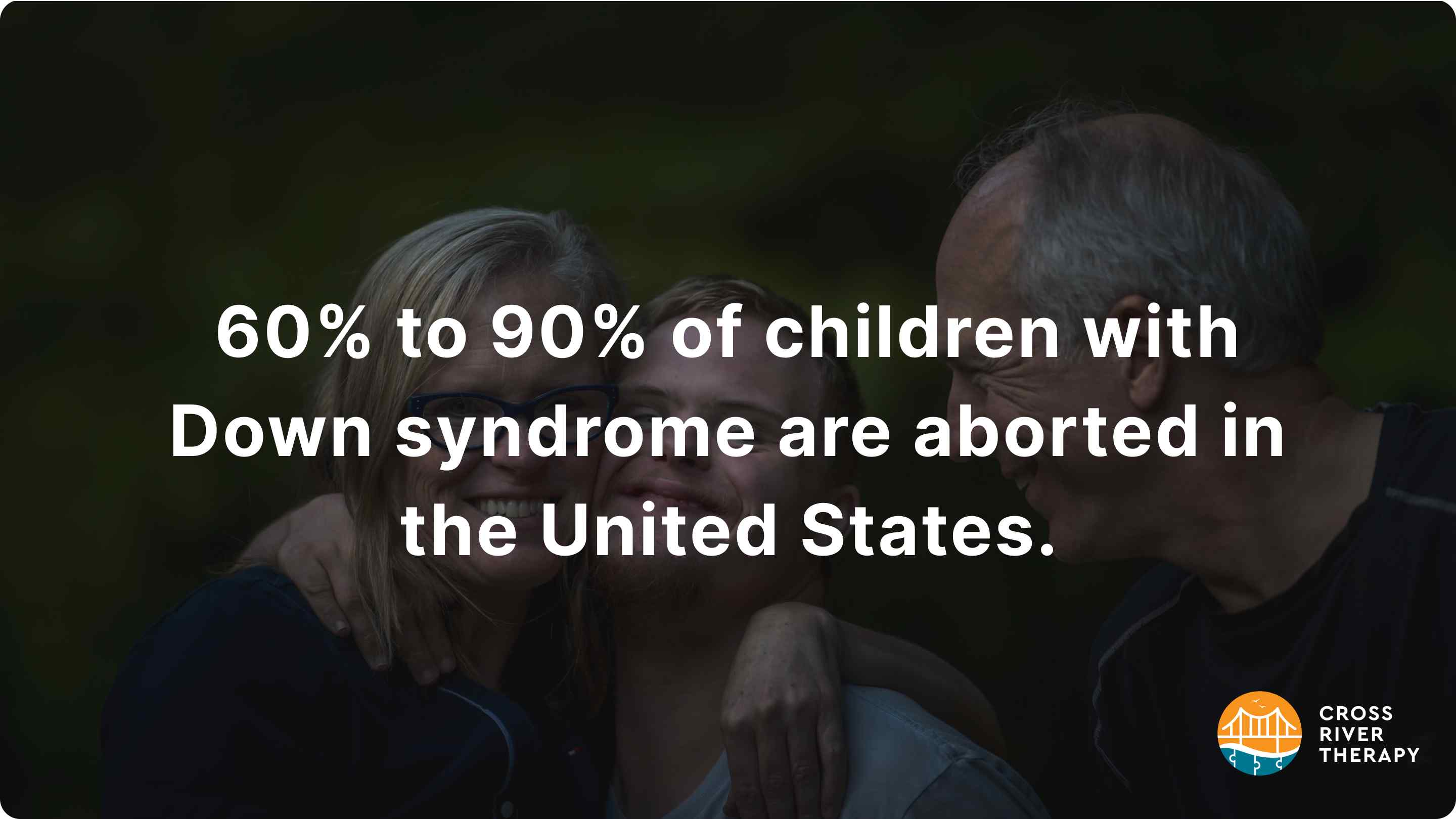Down Syndrome Life Expectancy & Prevalence Statistics
As recently as 1983, a person with Down syndrome lived to be only 25 years old, on average. Today, the average life expectancy of a person with Down syndrome is almost 60 years and continuing to rise.

Key Down Syndrome Life Expectancy & Prevalence Statistics
We've compiled the latest statistics about Down syndrome:
- Today, the average life expectancy of a person with Down syndrome is almost 60 years and continuing to rise, thanks to advancements in treatment.
- Over 6,000 babies are born with Down syndrome in the United States each year.
- 1 out of every 700 babies born in the United States is estimated to have the Down syndrome.
- The estimated Down syndrome prevalence is between 1 in 1,000 to 1 in 1,100 live births worldwide, according to the World Health Organization.
- Women who have had one child with Down syndrome have an increased chance of having another child with the condition.
- Approximately 50% of older adults with Down syndrome will develop memory loss, according to the Down’s Syndrome Association.
- 57% of adults with Down syndrome are employed. Only 3% were full-time paid employees of that 57%. 26% of adults with Down syndrome are volunteers. And almost 3% are self-employed.
- Around 60% to 90% of children with Down syndrome are aborted in the United States, compared to 18% of all pregnancies ending in abortion.
- Studies indicate that Down syndrome appears to be more common among males than females.
- From 1979 to 2003, the rate of death for a person born with Down syndrome during their first year of life fell by about 41%. Therefore, only around 5% of babies born with Down syndrome will die by age 1.
- Around 50% of all babies born with Down syndrome are also born with a congenital heart defect.
- The prevalence of Down syndrome increases as the mother’s age increases.
Down Syndrome Life Expectancy Chart
If you're looking to find out how long do people with Down Syndrome live, read on. Below are the latest statistics on an individual with Down syndrome's life expectancy:
- In 1983, an individual with Down syndrome lived to be only 25 years old on average.
- In 2022, the average Down syndrome life expectancy is almost 60 years.
- The life expectancy of people with Down syndrome varies based on their race. In most cases, the disorder occurs as a "random" occurrence. It equally affects every racial group.
- African American and other minority populations have not experienced the same level of improvement to their mortality rate as white populations.
- Researchers at The Center for Disease Control conducted a study and looked the death rate of almost 18,000 people with Down syndrome in the United States from 1983-1997. They reported life expectancies of minority populations was almost half of white populations. Interestingly, life expectancy had increased in minority populations, but not to the level of improvement seen in non-minority populations.


Prevalence Of Down Syndrome: How Common Is Down Syndrome?
If you're wondering how many people live with Down syndrome in the U.S., continue reading.

- 38% of Americans know someone with Down syndrome.
- Over 6,000 babies are born with Down syndrome in the United States each year.
- 1 out of every 700 babies born in the United States is estimated to have the Down syndrome.
- The estimated Down syndrome prevalence is between 1 in 1,000 to 1 in 1,100 live births worldwide, according to the World Health Organization.
- The number of babies born with Down syndrome increased by about 30% between 1979 and 2003.

Down Syndrome Abortion Rates
It is estimated that 60% to 90% of children with Down syndrome are aborted in the United States, compared to 18% of all pregnancies ending in abortion.

Is Down Syndrome More Common In Males Or Females?
Studies indicate that Down syndrome appears to be more common among males than females.

Health Conditions That Affect People With Down Syndrome
Around half of all babies born with Down syndrome are also born with a congenital heart defect. Babies born with Down syndrome can be affected by a variety of heart defects.

Many will need surgery, while some milder heart defects could go away on their own as the child grows.
Children with Down syndrome are at higher risk compared to children without the disorder for:
- Hearing loss (up to 75% may be affected)
- Obstructive sleep apnea (between 50 -75%)
- Ear infections (50-70% could be affected)
- Eye diseases, like cataracts (up to 60%)
- Eye issues requiring glasses (50%)
- Heart defects present at birth (50%)
- Anemia (red blood cells can’t carry enough oxygen to the body) (3%)
- Leukemia (1%) in infancy or early childhood
- Hirschsprung disease (<1%)
Healthcare Needs and Costs for People with Down Syndrome

- Average medical care costs are 12 times higher for children with Down syndrome compared to children of the same age without the disorder. This is among children aged 0-4 years with private insurance.
- Infants with Down syndrome who are born with a heart defect had, on average, health care costs that were five times higher in the first year of life than for infants with Down syndrome who did not have a heart defect.
- Almost 60% of families of children with Down syndrome provided health care at home.
- More than 40% of families of children with Down syndrome have a family member who stopped working because of the child's condition.
- Approximately 40% of families report having financial problems due to the child's condition.
Symptoms
Though not all people with Down syndrome have the same facial features, some of the more common include:
- Small head
- Short neck
- Flattened face
- Protruding tongue
- Unusually shaped or small ears
- Poor muscle tone
- Short height
- Upward slanting eye lids, also known as palpebral fissures
- Excessive flexibility
Myths & Facts About Down Syndrome
Down Syndrome Myths
- Myth #1: Down syndrome is a rare disorder.
- Myth #2: Down syndrome is hereditary and runs in families.
- Myth #3: The majority of children diagnosed with Down syndrome are born to older parents.
- Myth #4: All individuals with Down syndrome have a severe cognitive disability.
- Myth #5: People with Down syndrome are always sick.
- Myth #6: Individuals with Down syndrome are constantly happy.
- Myth #7: Scientists know everything there is to know about Down syndrome.
- Myth #8: Individuals with Down syndrome cannot be active members of their community.
- Myth #9: Adults with Down syndrome aren't able to develop close interpersonal relationships.
- Myth #10: It's fine to use the "r-word", even if you don't really mean it.
Down Syndrome Facts
- Down syndrome is the most common chromosomal disorder in the United States.
- People with Down syndrome have an extra copy or partial copy of chromosome 21.
- People with Down syndrome can have a variety of complications.
- Maternal age is the only certain risk factor for Down syndrome.
- Down syndrome is a genetic condition, but it isn’t hereditary.
- A 35-year-old woman has around a 1 in 350 chance of conceiving a child with Down syndrome. A 40-year-old woman has a 1 in 100 chance, and a 45-year-old woman has a 1 in 30 chance.
- People with Down syndrome attend school, work, participate in decisions that affect them, vote, have meaningful relationships, and contribute to society in many great ways.
What Is Down Syndrome?
Down syndrome is a genetic chromosome 21 disorder causing developmental and intellectual delays. It's caused when abnormal cell division results in extra genetic material from chromosome 21. The disorder causes a distinct facial appearance, developmental delays, intellectual disability, and could be associated with heart or thyroid disease.

Causes Of Down Syndrome

- 33% of translocation cases are hereditary, accounting for around 1% of all cases of Down syndrome.
- 80% of children with either trisomy 21 or mosaicism Down syndrome are born to mothers who are younger than 35 years old.
- If the mother carries the translocation genes, the risk of having a second child with the translocation type of Down syndrome is around 10-15%. The risk is around 3% if the father is the carrier.
- We aren't sure why Down syndrome happens, it could be that the egg or sperm that come together in fertilization has an extra chromosome.
- Some things that could affect your risk of having a baby with Down syndrome are: your age when you get pregnant, being a carrier of a certain type of Down syndrome, and already having a baby with Down syndrome.
Sources
- National Library Of Medicine
- NationWideChildrens.org
- Centers for Disease Control and Prevention
- National Down Syndrome Society
- Mayo Clinic

Have Any Questions?
Whether you're curious about our services or need support, we're just a click away. Reach out or check our FAQs for quick answers.

